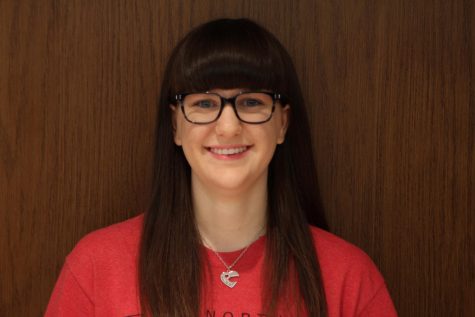SM North adapts after CPR becomes required part of high school curriculum
May 9, 2019
This has been the first year that CPR is required for all Kansas high school students, following a unanimous decision by the Kansas State Board of Education in December 2017.
According to medical science and health teacher Robert Oliver, SMSD made the decision to fulfill this requirement by adding CPR to the curriculum for health classes.
“I got an email from the state of Kansas and it said that starting this year, CPR would be a graduation requirement,” Oliver said. “So I said to administration, ‘Hey, do you know anything about that?’ and they didn’t. So I said, ‘We need to start making plans because we need to figure out where we’re going to put that CPR training.’ I knew it was going to be in health class.”
For Oliver, the decision to incorporate CPR into the health curriculum was much-needed.
“I was on a code blue team for five years before I came to education, so that’s one of the things I did,” Oliver said. “A lot of people died under my hands because of gunshots, violence, motorcycle wrecks, but I firsthand saw the benefits of [CPR] and I see how important it is to save lives.”
According to Kim Barney, Assistant Director of Curriculum and Instruction, health teachers received instruction about how to teach CPR.
“Teachers were provided with training on how to demonstrate and teach CPR and AED, and the expectation to teach these skills was explained during a Professional Development Day in August,” Barney said. “These concepts are also explicitly listed in the Health Curriculum Maps which teachers were involved in creating last year. Additionally, teachers submit the dates these concepts are taught in their classroom each semester so we have documentation that these skills were covered in each class every semester.”
However, it remains unclear whether this has been fully put into practice in all health classes. In a survey of 29 SM North freshmen, 38 percent said they did not learn CPR when they took health class this year. Of those who did learn it, 33 percent felt it did not adequately prepare them to give CPR in the future.
“For me, I’m more visual and hands-on, I don’t understand books that well,” freshman Alexia Velasquez said. “The learning style is mostly books but I want that to change to more hands-on stuff too.”
Freshman Kylee McGirr agreed that it’s beneficial to spend more time practicing than learning from a book.
“Then they have to physically be able to do it instead of just thinking they know how to do it,” McGirr said.
Oliver made sure to spend much of the lesson having students practice on mannequins to ensure they felt comfortable administering CPR.
“It is hands-only CPR, so it’s something anyone can approach and it can give people enough time for a first responder to get there and save a lot of lives in a lot of different ways,” Oliver said “So we set up the classroom with a basic set of mannequins, we did some instruction, we did the ‘whys’ and the ‘hows.’ Once people learn how easy it is, they’re less inclined to be scared to do it.”
Though freshman Morgan Jahnke has not learned CPR as part of her health class, she agrees that it is an important skill to have.
“It’s definitely important because it has the ability to save lives,” Jahnke said. “Sometimes when people have incidents in public and no one’s around who knows CPR, that’s a life gone that could’ve been saved.”

